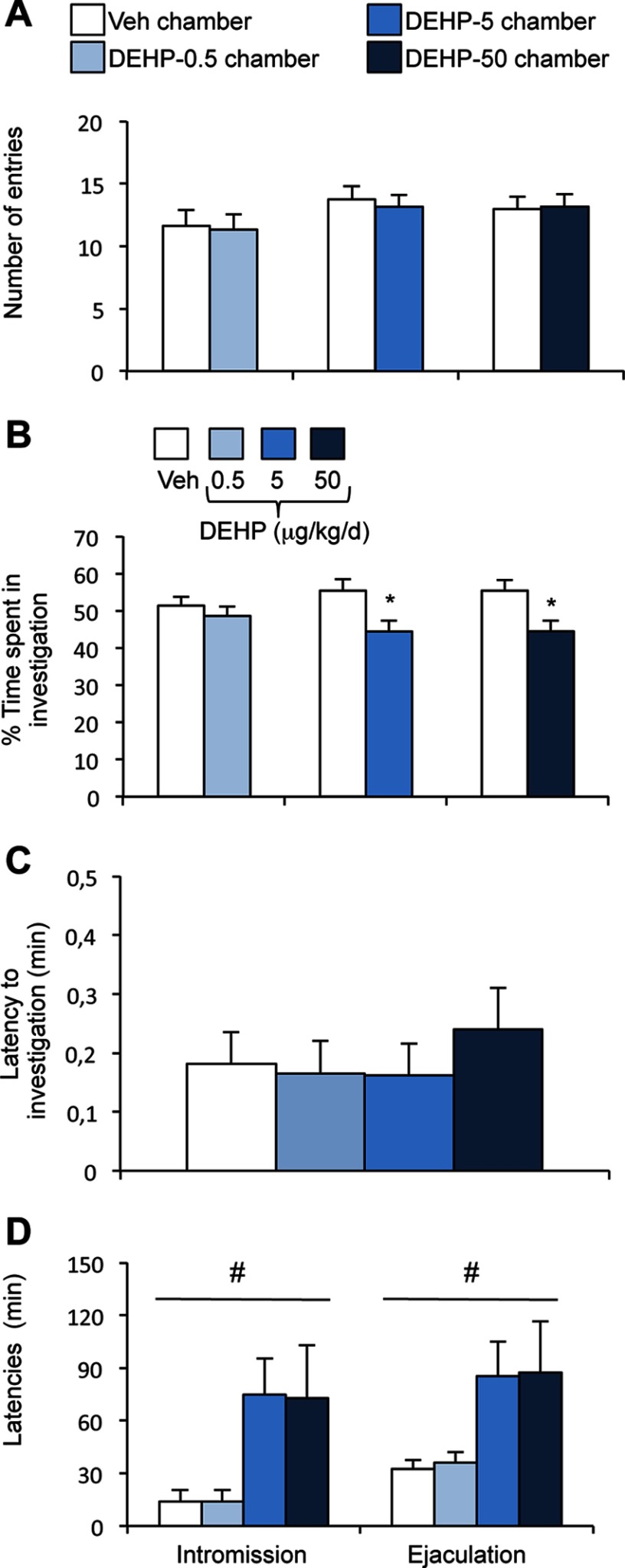Figure 3.
Effects of di(2-ethylhexyl) phthalate (DEHP) treatment on female interest in males and latency to intromission and ejaculation. (A–B) The partner preference test was performed in a three-chamber paradigm. (A) The number of entries of sexually receptive females into the chamber of the vehicle (Veh) vs. the chamber of the DEHP-exposed male. (B) The percentage of time spent investigating the vehicle (Veh) vs. the DEHP-exposed male. Data are expressed as the means of 11–12 males per treatment group, * vs. the vehicle male. (C–D) In the mating test, one-way analysis of variance (ANOVA) showed no effect of DEHP treatment on the latency to the first anogenital chemoinvestigation towards sexually receptive females (C), but an effect (#) on the latencies to first intromission and ejaculation (D). Data are expressed as the means of 11–12 males per treatment.

